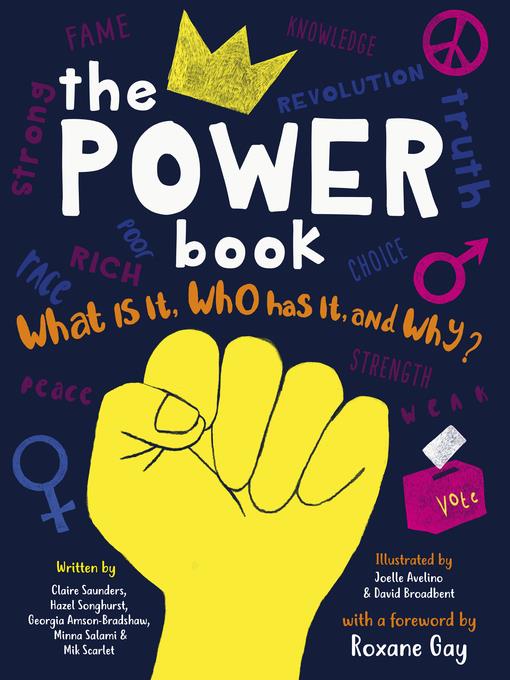
The Power Book
What is it, Who Has it and Why?
کتاب های مرتبط
- اطلاعات
- نقد و بررسی
- دیدگاه کاربران
نقد و بررسی

October 7, 2019
Gr 3-7-Authors Saunders, Songhurst, Amson-Bradshaw, Salami, and Scarlet have collaborated to offer an excellent primer for older elementary and middle school students. The book is formatted as a text-heavy picture book, with colorful pages detailing a different aspect of power. Vibrantly sketched illustrations add dimension to topics, and "thinking point" questions invite readers to reflect on key concepts. The authors feature diverse representation throughout and highlight important civil rights leaders. The progression of the book is logical and concludes with a call to action. The text touches on a variety of important discussions surrounding power, including wealth inequality, gender inequality, and systematic racism, but due to its format, it's not able to conduct a truly deep dive. VERDICT The book serves its purpose well, but students looking for a more nuanced or complex explanation of power should look elsewhere. -Katharine Gatcomb, Portsmouth Public Library, NH
Copyright 2019 School Library Journal, LLC Used with permission.

September 15, 2019
A consciousness raiser about who makes and enforces life's written and unwritten rules. Noting at the outset that "power is neither good nor bad; it totally depends on how it is used," five British writers begin by very briefly laying out a general picture of how adults, bullies, and political leaders wield influence over others. Subsequent sections explore types of said influence--from race, "Rainbow Rights," and "Different Bodies" to war and money--and offer suggestions for self-empowering activities. Though these last are at least relatively low-risk (i.e., self-esteem-building exercises, making signs and petitions), embedded profiles of activists such as Emmeline Pankhurst, Mohandas Gandhi, Che Guevara, and Alan Turing make it clear that bucking the powers that be can carry a high price tag. The authors pose wonderfully perceptive what-ifs, such as invitations to identify things that might be acceptable today but not OK in the future and to think about Snow White falling in love with Cinderella. These add needed depth and scope to a discussion that occasionally takes a simplistic turn ("the US civil rights movement...eventually ended segregation across America") and glosses over a number of relevant topics, from terrorism and religion to confirmation bias. The illustrations add a carefully inclusive mix of celebrated figures and generic, mostly young activists pointing and posing around the blocks of text. It's got a few gaps, but it's stimulating reading nonetheless for upcoming activists and rebels. (glossary, bibliography) (Nonfiction. 7-11)
COPYRIGHT(2019) Kirkus Reviews, ALL RIGHTS RESERVED.

December 2, 2019
Brightly colored and attractively organized, this informative volume aims to define and explain power as three main types (everyday, world-changing, and personal), and explores factors (worldviews, racism, gender, sexuality, etc.) that affect a person’s power. Throughout, thoughtfully composed “Thinking Points” guide readers, encouraging connections to their own lives and experiences, while echoing the information presented in the text. For example, after a section titled “Who’s in Charge of the Grown-Ups,” which includes an explanation of hierarchies and a definition of “the state,” readers are asked: “What do you think would happen if we got rid of the state? Do you think it would be a good or a bad thing?” A thoughtful foreword from Roxane Gay and short profiles of contemporary and historical individuals who have leveraged power to impact the world remind readers that power, while “neither good nor bad,” can inspire real and profound change. Ages 7–10.

























دیدگاه کاربران